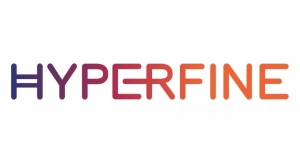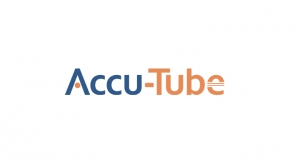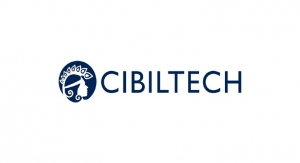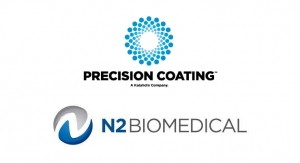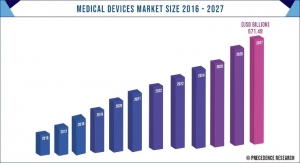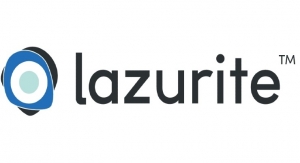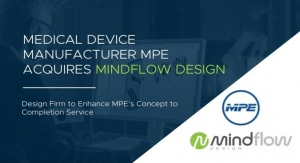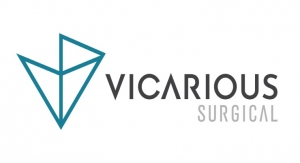David C. Robson, Principal, Robson Advisors06.04.18
Thirty years ago, CAD was not broadly available. Components, assemblies, and mold drawings were drawn on vellum—with a pencil—and printed on paper. The internet as we know it did not exist. Engineers and buyers had to peruse the Thomas Register or go to expositions to find vendors. There was no such thing as additive manufacturing; prototype parts had to be machined and glued or screwed together to approximate the intended final product’s performance. Prototype lead times were measured in months, not days, and software routines were measured in kilobytes and carried on floppy disks.
There also wasn’t a business culture of using external development and manufacturing resources or service providers. Most medical device companies strove to be vertically integrated or at least handle their products’ final assembly. There was neither email nor Microsoft PowerPoint nor Project. And there certainly weren’t smartphones, tablets, or cloud computing. (Ah, the good old days…)
When MPO was first published 15 years ago, certain trends in play were fundamentally changing the medical device product development and manufacturing landscape. Universal access to email and the internet’s growing utility catalyzed remarkable leaps in communication efficiency. Plastic prototype parts could be fabricated overnight via stereolithography, though the process was still very expensive with only a handful of material choices. Express delivery services and logistics companies enabled sending and receiving of packages to and from overseas in a few days. CAD and CAM were making life easier for designers, engineers, and machinists. But in the medical device industry, construction of injection molds and fabrication of machined parts were largely dependent upon paper drawings with specific draft, radius, and fillet callouts and detailed cross sections. Fully integrated CAD/CAM solutions were still in their infancy. Likewise, operational systems such as MRP/ERP, document control and training records, and management of Design History Files were independent of one another. Many compliance systems relied on handmade signatures kept in physical filing cabinets. The ideas of a “virtual company” and employees working from home were largely foreign.
The past 15 years have seen extraordinary changes within the medical device development and manufacturing space. Components and service providers can be found via every smartphone and Wi-Fi-enabled machine. Advances in manufacturing and inspection equipment have reduced the potential for faulty products to reach patients. Increased focus on usability and continued refinement of risk-based development principles have lessened the likelihood of incorrect product usage. Touchscreens with information-rich user feedback allow better treatment monitoring and decisions. Electronics miniaturization, body-attach materials, wireless communications, and lithium ion batteries have enabled treatment and monitoring virtually anywhere.
Without exception, these advances have enabled more efficient development, faster generation of prototypes and manufacturing lines, and better, more reliable information transfer from one company or system to another. The net results of these changes are safer, more effective products, which have provided better and less error-prone treatment to patients. Ultimately, this has saved and improved patients’ lives and made advanced healthcare more available and more affordable worldwide.
More treatments and diagnostic systems are in the hands of patients or home-based caregivers. Likewise, procedures traditionally reserved for the OR are now routinely performed in outpatient clinics. Remotely-controlled instruments and catheters can navigate to precise locations to perform surgery via a single incision in cases formerly requiring open procedures. Unprecedented amounts of data are being collected and analyzed via cloud-based data centers and algorithms. Interconnectivity between OEMs, supply chain partners, and the final customer is commonplace.
There have also necessarily been changes in regulations and standards to receive approval to market a medical product. The regulatory review burden has increased due in large part to increased complexity of devices and their treatments. Recently, the medical device marketplace has experienced a double-whammy of pressure due to the FDA, EU, and rest-of-world standards. For instance, the Affordable Care Act’s reimbursement implications have a wide impact in the U.S., while companies distributing devices in Europe scramble to conform to recently revised EU MDR requirements.
The term “medical device” has morphed into a catchall, representing everything from scalpels and surgical robots, to blood oxygenators and dialysis systems, to combination drug delivery products and gene collection and processing kits.
Enablers of the Near Future
Technology and clinical discovery will continue to evolve and collaborate to benefit patients and businesses, with no end in sight. Below are some areas that have significantly advanced over the last few years and seem to be strengthening and becoming more capable every year.
Prototyping methods. A number of enabling technologies are making prototyping faster, less expensive, and more production-representative. More design iterations can be evaluated through the development cycle, reducing the risk of missing critical items. CAD-to-part machining also offers significant reduction of steps in fabrication, including less labor.
Additive part fabrication and the explosion of usable materials—both plastics and metals—is reducing the barrier to prototyping complex, structurally similar, production-representative parts.
Quick-turn mold fabrication is getting faster, better, and less expensive. Significant calendar time is saved over traditional mold-making times; development programs can construct statistically significant numbers of prototypes for design verification and clinical testing efforts.
Quick-turn PCBs and PCB assembly systems are likewise allowing companies to exercise the final PCB design and associated parts as well as the expected manufacturing process.
On-shore suppliers and local service providers. Similar to the micro brewing and farm-to-table dining revolutions, “staying local” for contract manufacturing and other services has become a significant consideration. By incorporating design-for-manufacture (DFM) techniques in concert with automated assembly and inspection equipment, U.S.-based manufacturing costs can compete with out-of-country low labor cost facilities. Coupled with the inherent challenges and risks of long-distance supply chain logistics, this has some OEMs wondering whether lower cost countries’ labor cost savings are real in the long run.
Artificial intelligence. According to experts and prognosticators in the field, artificial intelligence (AI) is poised to advance at a staggering rate. Anyone who has regularly used a voice-enabled device knows how much they have improved over the past year or two. Hands-free dictating and instructions are becoming common and the field of AI promises to revolutionize human-device interaction, associated treatments, and data collection.
Robotic/automated controls. In addition to advancements in manufacturing methods leveraging automated assembly systems, machine-assisted (robotic) surgery is expected to grow in acceptance and competitive alternatives. Medical device companies, both small and large, are pursuing a wide variety of solutions promising to reduce the size and number of incisions, reducing potential for hospital-acquired infections and perhaps cost. Machine-assisted systems should also transform surgical procedures traditionally requiring extraordinary surgical dexterity and spatial awareness into those a wider group of doctors can perform. In time, it’s reasonable to imagine certain portions of a procedure might be automated or speech-directed, rendering “robotic surgery” a more appropriate description. Automated controls could conceivably run suture knot tying, visual recognition and ablation of a target tissue, positioning of implants, and navigation to a particular surgical site.
Gene and viral therapies. Although a universal cure for cancer has not yet been discovered, genetic and viral therapies are likely to be on the path to success. Decades of research and experimentation have been invested and the advancement of human genome knowledge is progressing at an encouraging rate. Ongoing characterization of individual gene functions and turning them “off” and “on,” coupled with tailoring cells to target and “infect” or destroy cancer cells, could someday obviate the need for chemotherapy and surgery.
Microbiome therapies. Researchers strive to understand the relationship between the human body and the trillions of microbes residing in the gastrointestinal system and the skin’s surface. Probiotics are just the tip of the iceberg—simply changing a key portion of a patient’s microbiome could provide cures for allergies, gluten intolerance, Celiac disease, and degenerative diseases like Parkinson’s and multiple sclerosis. While this therapy’s full potential could be decades away, fecal implantation and other forms of microbiome manipulation showed remarkable results in recent studies.
Additive manufacturing for finished goods. The additive part fabrication boom enabling overnight parts for prototypes is poised to contribute to finished goods assemblies.
Biocompatible materials are becoming available for both plastic and metal parts. Additive machines are faster and less expensive to run. The scale of part printing facilities is growing and producing large part quantities isn’t far away. It won’t be long before the cost modeling for using printed parts may make more sense than investing in injection molds. One advantage is there would be virtually no cost to changing part designs or custom runs. This revolution will require adjustments to part design and DFM techniques to take advantage of part configurations previously impossible due to the need for draft angles and parting lines, etc.
Personalized devices. Personalized and customizable products and drug delivery regimens are already well-established for certain diseases and treatments. 3D scanning and MRIs of a patient’s anatomy are already used to develop custom orthopedic implants and braces. Surgical procedures can be pre-planned, including tumor targeting for radiation therapy. This data gathering could eventually be combined with additive manufacturing techniques to fabricate fully customized solutions at an acceptable cost.
Undoubtedly, this article has missed all sorts of innovations and capabilities—cloud computing and portable patient records, for example—that will shape the next 15 years and improve the health, well-being, and quality of life of patients and enable caregivers to do their jobs better and more reliably, all the while focusing on making healthcare more affordable.
If this future-casting seems too optimistic, idealistic, or unrealistic, reflect back on the incredible advancements made over the past 30 years and realize we’re just getting started.
David C. Robson, a principal at Robson Advisors, has spent 30 years concentrating on the development of medical devices. Seventeen of those years were spent working for a full-service product development firm where he interacted with both large and small medical device companies and reviewed statements of work and requests for quotation, wrote proposals, and negotiated hundreds of work agreements. Robson and his partners now offer product development guidance and advocacy to early-stage medical device clients.
There also wasn’t a business culture of using external development and manufacturing resources or service providers. Most medical device companies strove to be vertically integrated or at least handle their products’ final assembly. There was neither email nor Microsoft PowerPoint nor Project. And there certainly weren’t smartphones, tablets, or cloud computing. (Ah, the good old days…)
When MPO was first published 15 years ago, certain trends in play were fundamentally changing the medical device product development and manufacturing landscape. Universal access to email and the internet’s growing utility catalyzed remarkable leaps in communication efficiency. Plastic prototype parts could be fabricated overnight via stereolithography, though the process was still very expensive with only a handful of material choices. Express delivery services and logistics companies enabled sending and receiving of packages to and from overseas in a few days. CAD and CAM were making life easier for designers, engineers, and machinists. But in the medical device industry, construction of injection molds and fabrication of machined parts were largely dependent upon paper drawings with specific draft, radius, and fillet callouts and detailed cross sections. Fully integrated CAD/CAM solutions were still in their infancy. Likewise, operational systems such as MRP/ERP, document control and training records, and management of Design History Files were independent of one another. Many compliance systems relied on handmade signatures kept in physical filing cabinets. The ideas of a “virtual company” and employees working from home were largely foreign.
The past 15 years have seen extraordinary changes within the medical device development and manufacturing space. Components and service providers can be found via every smartphone and Wi-Fi-enabled machine. Advances in manufacturing and inspection equipment have reduced the potential for faulty products to reach patients. Increased focus on usability and continued refinement of risk-based development principles have lessened the likelihood of incorrect product usage. Touchscreens with information-rich user feedback allow better treatment monitoring and decisions. Electronics miniaturization, body-attach materials, wireless communications, and lithium ion batteries have enabled treatment and monitoring virtually anywhere.
Without exception, these advances have enabled more efficient development, faster generation of prototypes and manufacturing lines, and better, more reliable information transfer from one company or system to another. The net results of these changes are safer, more effective products, which have provided better and less error-prone treatment to patients. Ultimately, this has saved and improved patients’ lives and made advanced healthcare more available and more affordable worldwide.
More treatments and diagnostic systems are in the hands of patients or home-based caregivers. Likewise, procedures traditionally reserved for the OR are now routinely performed in outpatient clinics. Remotely-controlled instruments and catheters can navigate to precise locations to perform surgery via a single incision in cases formerly requiring open procedures. Unprecedented amounts of data are being collected and analyzed via cloud-based data centers and algorithms. Interconnectivity between OEMs, supply chain partners, and the final customer is commonplace.
There have also necessarily been changes in regulations and standards to receive approval to market a medical product. The regulatory review burden has increased due in large part to increased complexity of devices and their treatments. Recently, the medical device marketplace has experienced a double-whammy of pressure due to the FDA, EU, and rest-of-world standards. For instance, the Affordable Care Act’s reimbursement implications have a wide impact in the U.S., while companies distributing devices in Europe scramble to conform to recently revised EU MDR requirements.
The term “medical device” has morphed into a catchall, representing everything from scalpels and surgical robots, to blood oxygenators and dialysis systems, to combination drug delivery products and gene collection and processing kits.
Enablers of the Near Future
Technology and clinical discovery will continue to evolve and collaborate to benefit patients and businesses, with no end in sight. Below are some areas that have significantly advanced over the last few years and seem to be strengthening and becoming more capable every year.
Prototyping methods. A number of enabling technologies are making prototyping faster, less expensive, and more production-representative. More design iterations can be evaluated through the development cycle, reducing the risk of missing critical items. CAD-to-part machining also offers significant reduction of steps in fabrication, including less labor.
Additive part fabrication and the explosion of usable materials—both plastics and metals—is reducing the barrier to prototyping complex, structurally similar, production-representative parts.
Quick-turn mold fabrication is getting faster, better, and less expensive. Significant calendar time is saved over traditional mold-making times; development programs can construct statistically significant numbers of prototypes for design verification and clinical testing efforts.
Quick-turn PCBs and PCB assembly systems are likewise allowing companies to exercise the final PCB design and associated parts as well as the expected manufacturing process.
On-shore suppliers and local service providers. Similar to the micro brewing and farm-to-table dining revolutions, “staying local” for contract manufacturing and other services has become a significant consideration. By incorporating design-for-manufacture (DFM) techniques in concert with automated assembly and inspection equipment, U.S.-based manufacturing costs can compete with out-of-country low labor cost facilities. Coupled with the inherent challenges and risks of long-distance supply chain logistics, this has some OEMs wondering whether lower cost countries’ labor cost savings are real in the long run.
Artificial intelligence. According to experts and prognosticators in the field, artificial intelligence (AI) is poised to advance at a staggering rate. Anyone who has regularly used a voice-enabled device knows how much they have improved over the past year or two. Hands-free dictating and instructions are becoming common and the field of AI promises to revolutionize human-device interaction, associated treatments, and data collection.
Robotic/automated controls. In addition to advancements in manufacturing methods leveraging automated assembly systems, machine-assisted (robotic) surgery is expected to grow in acceptance and competitive alternatives. Medical device companies, both small and large, are pursuing a wide variety of solutions promising to reduce the size and number of incisions, reducing potential for hospital-acquired infections and perhaps cost. Machine-assisted systems should also transform surgical procedures traditionally requiring extraordinary surgical dexterity and spatial awareness into those a wider group of doctors can perform. In time, it’s reasonable to imagine certain portions of a procedure might be automated or speech-directed, rendering “robotic surgery” a more appropriate description. Automated controls could conceivably run suture knot tying, visual recognition and ablation of a target tissue, positioning of implants, and navigation to a particular surgical site.
Gene and viral therapies. Although a universal cure for cancer has not yet been discovered, genetic and viral therapies are likely to be on the path to success. Decades of research and experimentation have been invested and the advancement of human genome knowledge is progressing at an encouraging rate. Ongoing characterization of individual gene functions and turning them “off” and “on,” coupled with tailoring cells to target and “infect” or destroy cancer cells, could someday obviate the need for chemotherapy and surgery.
Microbiome therapies. Researchers strive to understand the relationship between the human body and the trillions of microbes residing in the gastrointestinal system and the skin’s surface. Probiotics are just the tip of the iceberg—simply changing a key portion of a patient’s microbiome could provide cures for allergies, gluten intolerance, Celiac disease, and degenerative diseases like Parkinson’s and multiple sclerosis. While this therapy’s full potential could be decades away, fecal implantation and other forms of microbiome manipulation showed remarkable results in recent studies.
Additive manufacturing for finished goods. The additive part fabrication boom enabling overnight parts for prototypes is poised to contribute to finished goods assemblies.
Biocompatible materials are becoming available for both plastic and metal parts. Additive machines are faster and less expensive to run. The scale of part printing facilities is growing and producing large part quantities isn’t far away. It won’t be long before the cost modeling for using printed parts may make more sense than investing in injection molds. One advantage is there would be virtually no cost to changing part designs or custom runs. This revolution will require adjustments to part design and DFM techniques to take advantage of part configurations previously impossible due to the need for draft angles and parting lines, etc.
Personalized devices. Personalized and customizable products and drug delivery regimens are already well-established for certain diseases and treatments. 3D scanning and MRIs of a patient’s anatomy are already used to develop custom orthopedic implants and braces. Surgical procedures can be pre-planned, including tumor targeting for radiation therapy. This data gathering could eventually be combined with additive manufacturing techniques to fabricate fully customized solutions at an acceptable cost.
Undoubtedly, this article has missed all sorts of innovations and capabilities—cloud computing and portable patient records, for example—that will shape the next 15 years and improve the health, well-being, and quality of life of patients and enable caregivers to do their jobs better and more reliably, all the while focusing on making healthcare more affordable.
If this future-casting seems too optimistic, idealistic, or unrealistic, reflect back on the incredible advancements made over the past 30 years and realize we’re just getting started.
David C. Robson, a principal at Robson Advisors, has spent 30 years concentrating on the development of medical devices. Seventeen of those years were spent working for a full-service product development firm where he interacted with both large and small medical device companies and reviewed statements of work and requests for quotation, wrote proposals, and negotiated hundreds of work agreements. Robson and his partners now offer product development guidance and advocacy to early-stage medical device clients.


